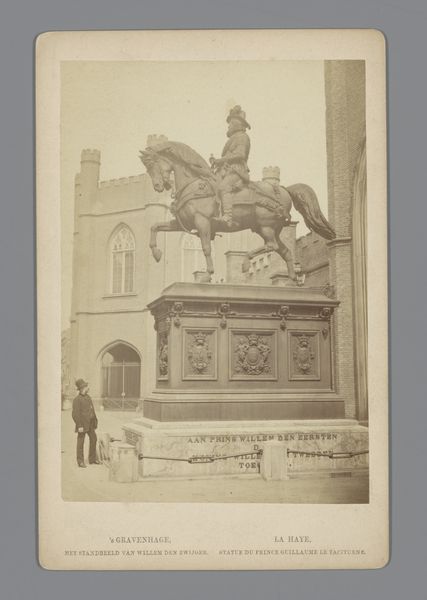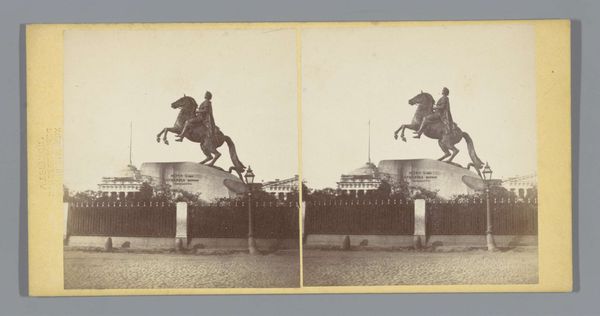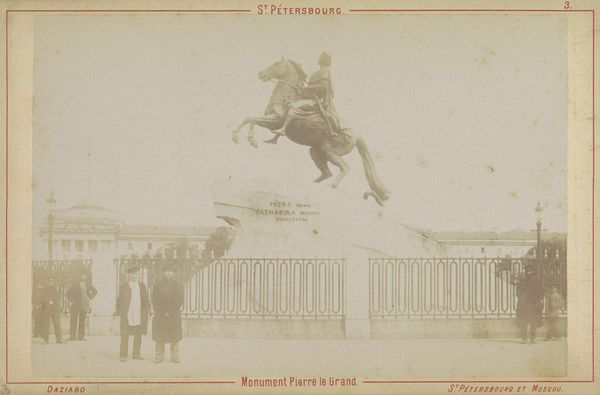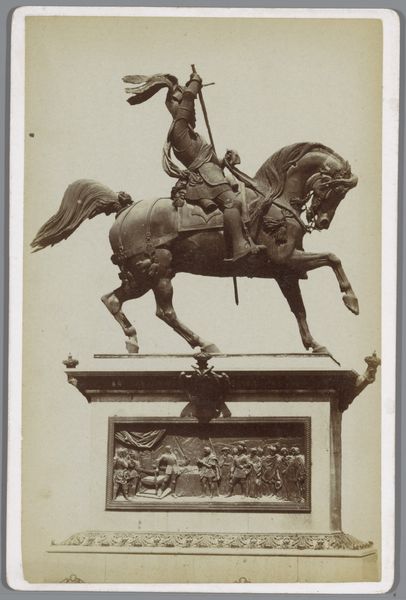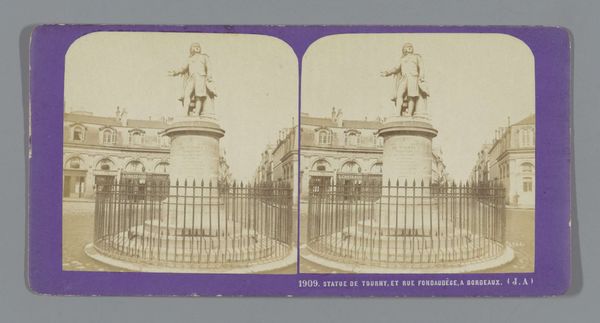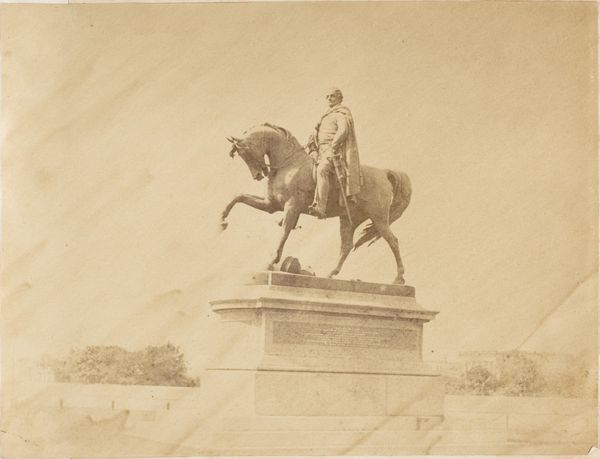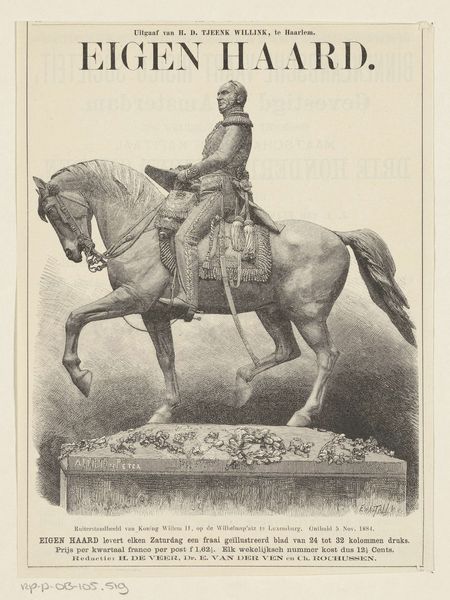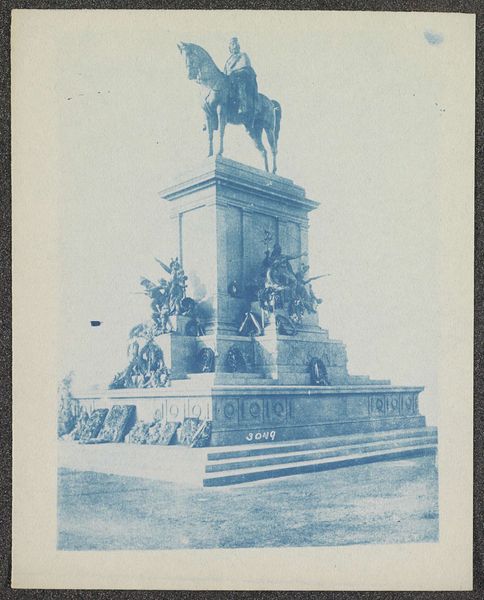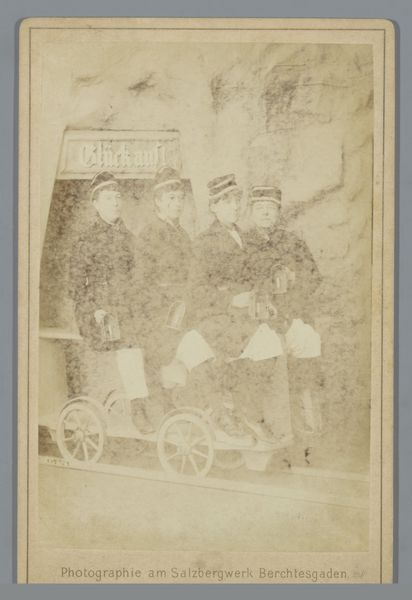
bronze, photography, sculpture
#
landscape
#
classical-realism
#
bronze
#
photography
#
sculpture
#
cityscape
Dimensions: height 95 mm, width 145 mm
Copyright: Rijks Museum: Open Domain
Curator: This is a photographic print of the "Beeld van paardentemmer op de Anichkovbrug in Sint-Petersburg", or the Horse Tamers statues of the Anichkov Bridge in Saint Petersburg. This photograph was created circa 1880 to 1900 by J. Daziaro. Editor: The subdued sepia tone immediately conveys a sense of history, of a time weathered by the elements, and the dynamism in the sculpture itself is strangely subdued when captured in two dimensions. The horse rearing, man straining against the leash—all feels a bit muted by the photographic process. Curator: Precisely. That struggle between man and beast, forever frozen in bronze, embodies themes of control versus instinct that resonate throughout Russian history. The figures recall classical sculpture, yet placed in a very specific urban landscape. The horse and the tamer as symbols. Editor: Yes, the landscape is almost as important, in that the cityscape itself, rendered in pale hues here, seems to participate as another character of restraint. Notice how the background buildings offer this sense of ordered restraint against which the figures push, with all those rigid windows and vertical architecture, reflecting the formal artistic choices. Curator: And that bridge connects more than just geographical points; it bridges different eras and ideologies. The sculptures became symbolic not only of artistic mastery but of Tsarist power, especially for its association with imperial grandeur, which underwent multiple interpretations during later revolutionary periods. The monument went from strength to resilience of Russian spirit. Editor: I find it fascinating how this photo mediates between the actual artwork and our interpretation. The framing and flat perspective introduce a tension. The people in front look almost like a casual group photo that happened to place this scene in their background. The photographic print almost flattens the emotional content the statues want to create. Curator: Photography allowed these representations to circulate and perpetuate certain cultural narratives tied to the nation. Thank you, it's useful to reflect on these visual symbols, understanding what we keep choosing to photograph, share, and ultimately, remember. Editor: Absolutely. Examining this intersection between materiality, sculpture, and photography deepens the analysis to find its artistic qualities are enhanced and slightly distorted.
Comments
No comments
Be the first to comment and join the conversation on the ultimate creative platform.
